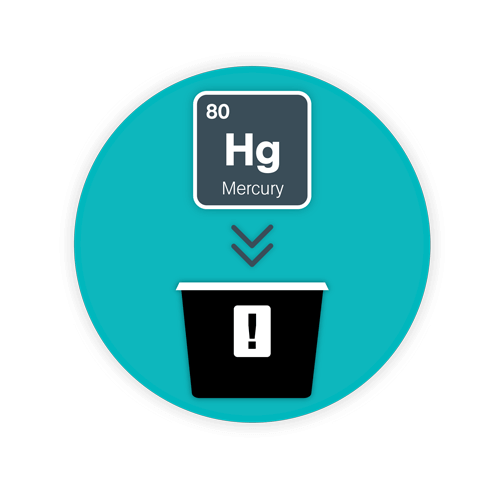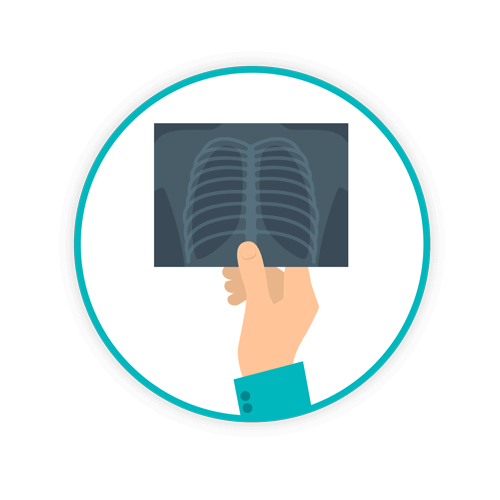Dental Waste Management Guidelines

Is your dental practice following dental waste management guidelines? It doesn’t matter whether you’re a member of the dental group, an oral surgeon, or run an independent facility in a rural region. Every dentist in every province throughout Canada must follow federal guidelines as well as provincial and regional guidelines when it comes to dental waste segregation and disposal practices.
In broad terms, dental waste management includes considerations for any waste produced in a dental office. That goes from any chemical used in the process of x-ray technologies to use of disinfectants, as well as identification and proper disposal of amalgam, mercury, silver and other heavy metals used in dental care scenarios. In fact, considerations for dental amalgam and mercury waste are the focus of many governmental regulations.
Get In Touch With Dental Waste Experts
TOPICS WE WILL COVER:
1 / What do Mercury and Amalgam Have to do With One Another?
2 / Dental Amalgam- A Very Brief Glimpse at Regulatory Guidelines
5 / Daniels Health Supports Dental Facilites
What do Mercury and Amalgam Have to do With One Another?

As early as 1845, the American Society of Dental Surgeons attempted to adopt a ruling that required that its members not use amalgam. It was learned that mercury, the main component of the amalgam, is toxic. Interestingly, the Society declined to adopt that resolution. The issue didn’t come up again until the 1980s when countries around the world started to phase out its use due to increased medical studies – and complaints.
In Canada, dental filling materials such as dental amalgam, are classified as a medical device, found under the Medical Devices Regulations of the Food and Drugs Act. However, authority for enforcement only refers to the sale of medical devices and not how they’re used by healthcare providers. In fact, in 1994, dental filling materials were specifically excluded from medical devices subjected to pre-market reviews by medical devices regulations.
Mercury is a byproduct of amalgam. According to Canadian Health Services, vapours of mercury are stimulated and released from filling surfaces by chewing and other impact-like actions of the teeth. Over time, that vapour is inhaled into the lungs or swallowed in saliva. In some cases, mercury particles can expose an individual to toxicity if embedded in soft tissues of the mouth. However, the risk to humans and animals is considered extremely minimal, but Canada and other countries around the globe are aware of the environmental aspects of improper amalgam dental waste disposal and have taken steps to reduce risks.
Dental Amalgam- A Very Brief Glimpse at Regulatory Guidelines
In 1999, the Canadian Environmental Protection Act declared that mercury is a toxic substance and that any wastes containing mercury, including dental amalgam, be classified as hazardous waste (Ontario regulation 347). At the time, limitations were placed on the limits of mercury or other heavy materials allowed to enter wastewater streams.
In 2005, Environment Canada published the Dental Wastes Best Management Practice Guide. The guide provides advice for the disposal of a number of dental wastes, including mercury, silver, lead, and biomedical and pathological anatomical and non-anatomical wastes. The guide also includes detailed regulatory recommendations for federal, provincial, as well as municipal governments.
In 2010, Environment Canada also required that dental offices throughout Canada implement a pollution prevention plan that focused on mercury releases from dental amalgam waste. In addition to use of amalgam waste separators, amalgam waste, as it’s deemed a hazardous waste, is required to be recycled or disposed of through a certified hazardous waste management carrier.
The majority of dental practitioners today segregate scrap (contact or non-contact) amalgam due to specifications of their waste carriers.
In provinces throughout Canada, legislation has required dental practices that work with dental amalgam to repair, place or remove from teeth “to install and maintain a dental amalgam separator that meets or exceeds the ISO dental equipment amalgam separators standard.”
dental amalgam separator that meets or exceeds the ISO dental equipment amalgam separators standard.”
Rules to follow include:
- Segregating contact amalgam (amalgam that has been in a patient’s mouth) from non- contact amalgam (which has not been placed in a patient’s mouth).
- Separating unused or broken capsules that can be managed as non-contact amalgam and collect in airtight and break-resistant containers. Properly label container as non-contact amalgam for waste carrier pickup.
- Non-contact amalgam is not to be placed into “regular” garbage bags or bins nor washed down drains or placed into biomedical waste containers.
- Contact scrap amalgam is to be connected to amalgam separators that meet or exceed ISO 11143 standards. Standard precautions should be in place. Chair-side traps and filters are to be airtight and non-breakable. Containers must be labelled as “contact amalgam”.
A number of cautions were also put into place in regard disposal of scrap contact amalgam:
- Contact amalgam waste is not to be placed in the same container as a biomedical waste
- Traps and filters are not to be rinsed in sinks due to the possibility of amalgam particles being discharged into sewer lines. Dental facilities connected to septic systems are not allowed to discharge amalgam wastewater into the septic system without first removing amalgam waste with the amalgam separator.
- Avoid wiping traps or filters with paper towels or any other materials, as this serves to create additional contaminated waste.
- Be aware that an empty amalgam capsule is currently classified as a non-hazardous material. As such, it may be disposed of in regular garbage. However, it is the responsibility of the practitioner to ensure that the capsules do not contain any residue.
Although medical materials and devices are under the regulatory purview of the Health Protection Branch of Health Canada, restorative material such as dental amalgam doesn’t fall into any classifications where Health Canada requires pre-market approval. However, they can take regulatory actions on any material. At this time there is no restricted use, according to the Canadian Dental Association, of dental amalgam in Canada.
In 2012, a survey was sent to dental facilities throughout the country and determined that a majority of dental facilities have adopted best management practices and have installed dental amalgam separators. This has enabled the country to achieve near total reduction of mercury released into the environment from dental amalgam waste, which has met their risk management objectives.
About Silver Wastes
Dental waste that contains silver, such as x-ray fixtures and developers might also be classified as a hazardous waste (Ontario regulation 347), but is dependent on the concentration of silver. As a heavy metal, a number of disposal options are recommended.
- Developers and fixer solutions should be separated and such solutions must be collected in separate containers in compliant containers, provided by suppliers or waste management companies.
- Such containers must be appropriately labelled as “x-ray fixer” or “x-ray developer”.
- Containers are only to be recycled or disposed of by approved waste carriers.
- In cases where 25 litres per month or less of developer is used by a dental facility, the facility is required to contact local municipalities to determine disposal options.
X-ray Films
X-ray films contain silver and lead are also classified as contaminants under Schedule IV of Ontario regulation 347. Such waste is not to be placed into regular garbage, classified as biomedical waste, or entered into the sewage system. Unused films should be recycled. Developed film, although not requiring special handling, is recommended to be recycled whenever possible. For collection, underdeveloped film that is expired or unusable should be placed into an approved waste container to be disposed of compliantly by a waste management company.
Daniels Health Supports Dental Facilites
Daniels Health provides support and resources as well as a knowledge base for dental practices throughout Canada. Our disposal solutions for hazardous and non-hazardous medical waste disposal are compliant, cost-effective, and customer-focused. Our products cater to every size of dental facility to optimise management of medical waste streams. For more information on Daniels Health, and our products and services, contact us today.
Let's Talk!
Your time is valuable, and we don’t want to play hard to get. You can either phone us directly on the details listed on our contact page, or feel free to fill out this short form and one of our team members will get back to you as quickly as possible.

